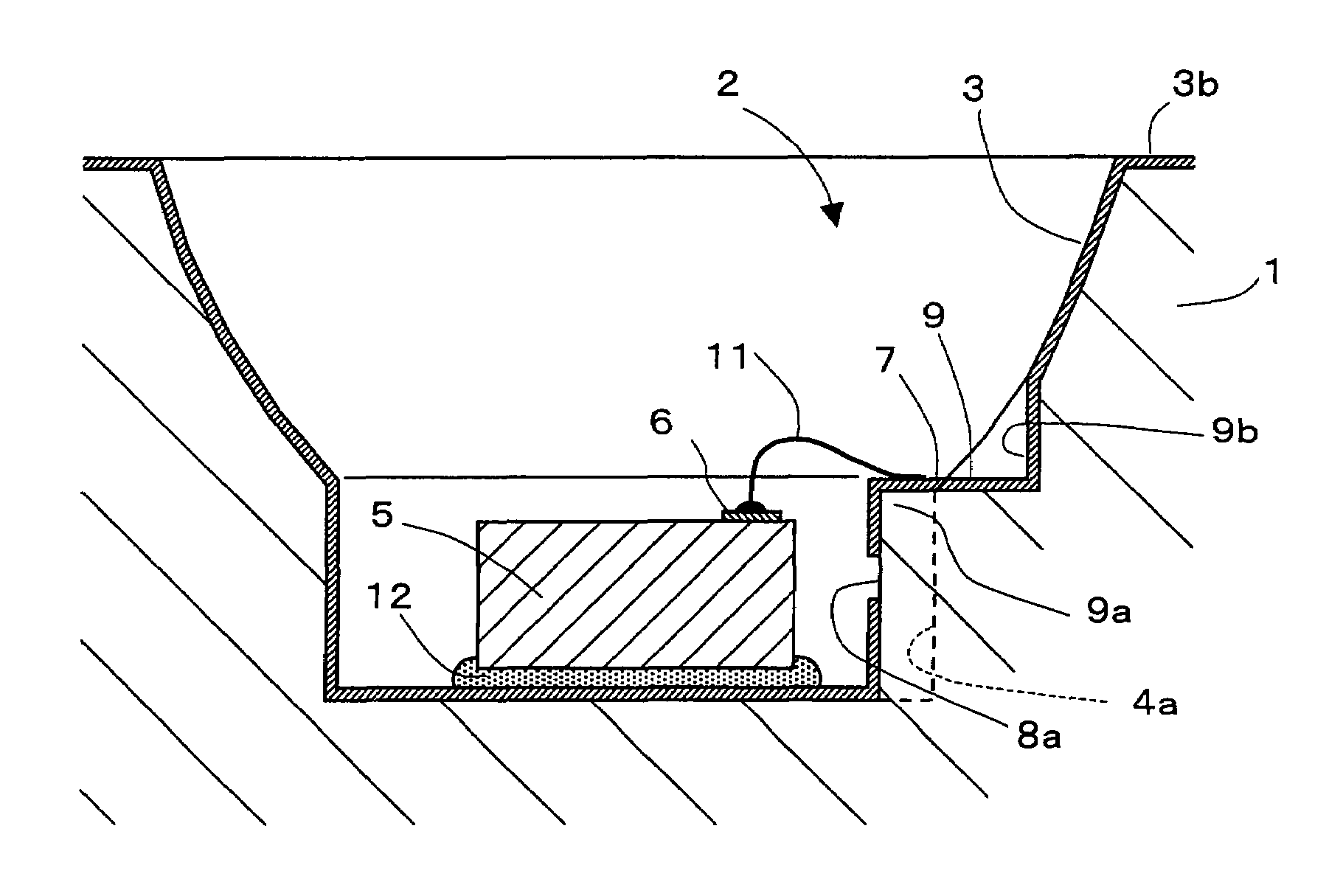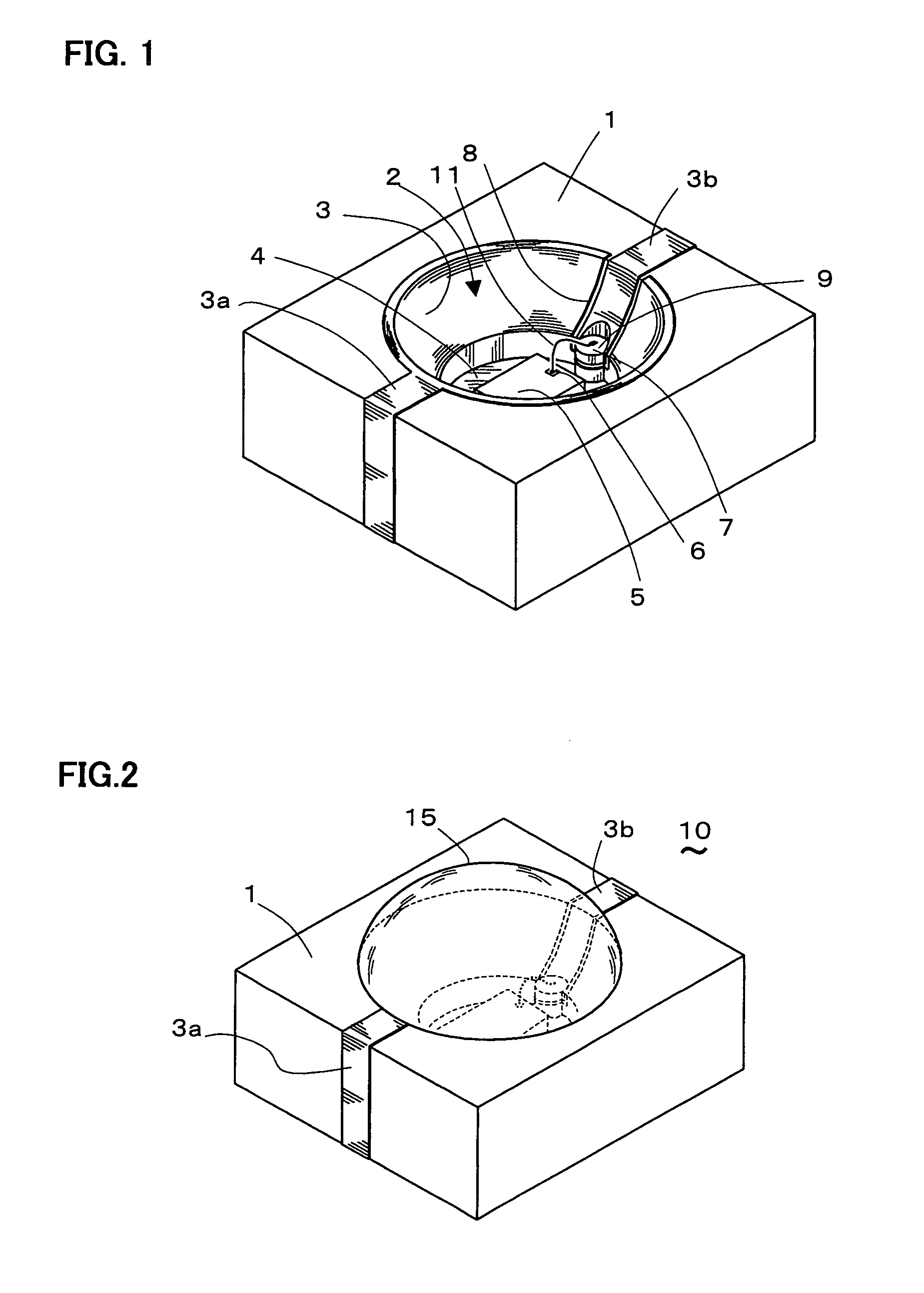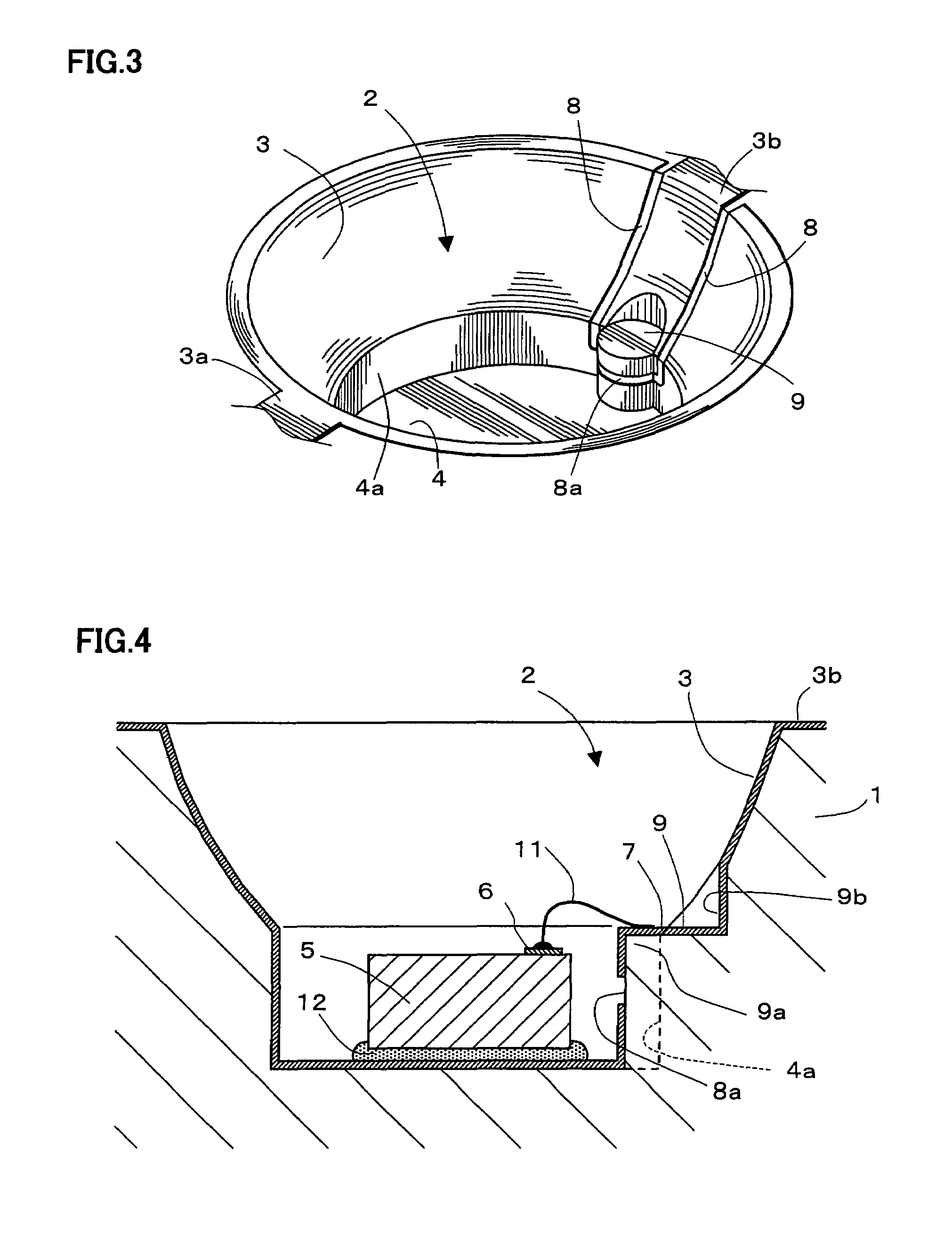Photoelectric device
a photoelectric device and lens layer technology, applied in the direction of photoelectric discharge tubes, electric discharge lamps, instruments, etc., can solve the problems of reducing the light emission efficiency limiting the miniaturization of the substrate, and increasing the cost of the photoelectric device-part, so as to improve the bonding force between the lens layer and the sealing resin layer.
- Summary
- Abstract
- Description
- Claims
- Application Information
AI Technical Summary
Benefits of technology
Problems solved by technology
Method used
Image
Examples
Embodiment Construction
[0071]Hereinafter, a photoelectric device-part according to an embodiment of the present invention will be described with reference to accompanied drawings. FIG. 1 shows a state in which a sealing resin layer of the photoelectric device-part is excluded and FIG. 2 is an external view showing the photoelectric device-part. A photoelectric device-part 10 is formed by mounting a photoelectric device 5 on a bottom surface 4 of a concave part 2 formed in a quadrangular circuit substrate 1, which is used as a light emitting or receiving device such as a photo connector. A light axis is defined in almost a center of a light emitting or receiving she of the photoelectric device 5 in the vertical direction. A metalized light reflecting surface 3 provided for light emission or reception by the photoelectric device 5 is formed on inner surface including a slanting curved surface which forms the concave part 2.
[0072]This light reflecting surface 3 is formed by providing the slanting curved surf...
PUM
 Login to View More
Login to View More Abstract
Description
Claims
Application Information
 Login to View More
Login to View More - R&D
- Intellectual Property
- Life Sciences
- Materials
- Tech Scout
- Unparalleled Data Quality
- Higher Quality Content
- 60% Fewer Hallucinations
Browse by: Latest US Patents, China's latest patents, Technical Efficacy Thesaurus, Application Domain, Technology Topic, Popular Technical Reports.
© 2025 PatSnap. All rights reserved.Legal|Privacy policy|Modern Slavery Act Transparency Statement|Sitemap|About US| Contact US: help@patsnap.com



